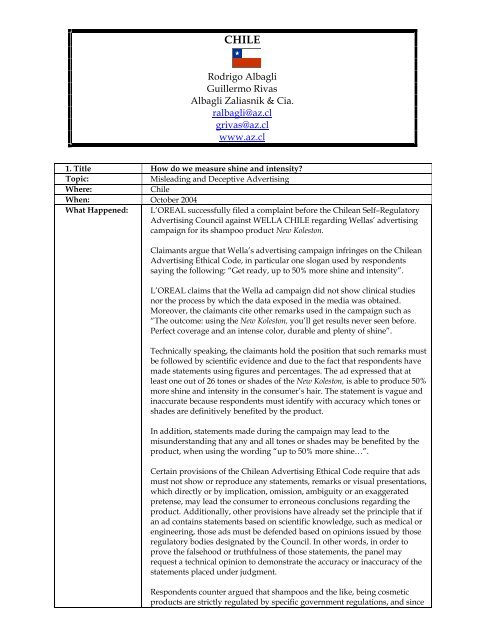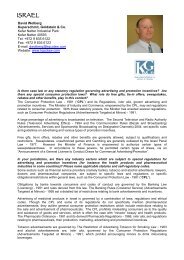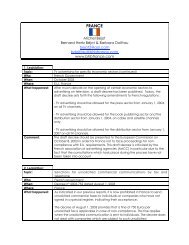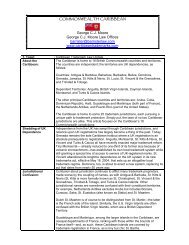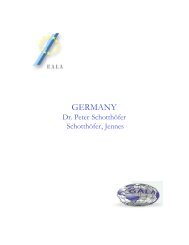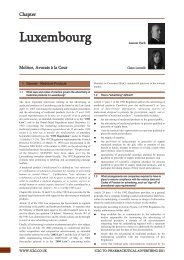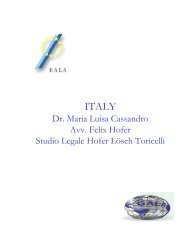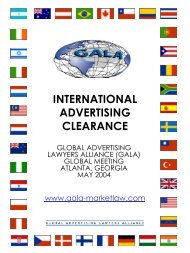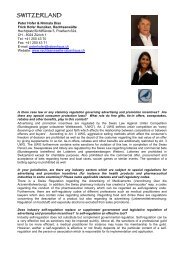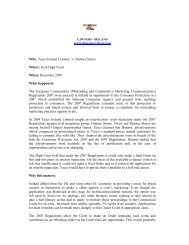list of contributors - GALA
list of contributors - GALA
list of contributors - GALA
Create successful ePaper yourself
Turn your PDF publications into a flip-book with our unique Google optimized e-Paper software.
CHILE<br />
Rodrigo Albagli<br />
Guillermo Rivas<br />
Albagli Zaliasnik & Cia.<br />
ralbagli@az.cl<br />
grivas@az.cl<br />
www.az.cl<br />
1. Title How do we measure shine and intensity?<br />
Topic: Misleading and Deceptive Advertising<br />
Where: Chile<br />
When: October 2004<br />
What Happened: L’OREAL successfully filed a complaint before the Chilean Self–Regulatory<br />
Advertising Council against WELLA CHILE regarding Wellas’ advertising<br />
campaign for its shampoo product New Koleston.<br />
Claimants argue that Wella’s advertising campaign infringes on the Chilean<br />
Advertising Ethical Code, in particular one slogan used by respondents<br />
saying the following: “Get ready, up to 50% more shine and intensity”.<br />
L’OREAL claims that the Wella ad campaign did not show clinical studies<br />
nor the process by which the data exposed in the media was obtained.<br />
Moreover, the claimants cite other remarks used in the campaign such as<br />
“The outcome: using the New Koleston, you’ll get results never seen before.<br />
Perfect coverage and an intense color, durable and plenty <strong>of</strong> shine”.<br />
Technically speaking, the claimants hold the position that such remarks must<br />
be followed by scientific evidence and due to the fact that respondents have<br />
made statements using figures and percentages. The ad expressed that at<br />
least one out <strong>of</strong> 26 tones or shades <strong>of</strong> the New Koleston, is able to produce 50%<br />
more shine and intensity in the consumer’s hair. The statement is vague and<br />
inaccurate because respondents must identify with accuracy which tones or<br />
shades are definitively benefited by the product.<br />
In addition, statements made during the campaign may lead to the<br />
misunderstanding that any and all tones or shades may be benefited by the<br />
product, when using the wording “up to 50% more shine…”.<br />
Certain provisions <strong>of</strong> the Chilean Advertising Ethical Code require that ads<br />
must not show or reproduce any statements, remarks or visual presentations,<br />
which directly or by implication, omission, ambiguity or an exaggerated<br />
pretense, may lead the consumer to erroneous conclusions regarding the<br />
product. Additionally, other provisions have already set the principle that if<br />
an ad contains statements based on scientific knowledge, such as medical or<br />
engineering, those ads must be defended based on opinions issued by those<br />
regulatory bodies designated by the Council. In other words, in order to<br />
prove the falsehood or truthfulness <strong>of</strong> those statements, the panel may<br />
request a technical opinion to demonstrate the accuracy or inaccuracy <strong>of</strong> the<br />
statements placed under judgment.<br />
Respondents counter argued that shampoos and the like, being cosmetic<br />
products are strictly regulated by specific government regulations, and since


